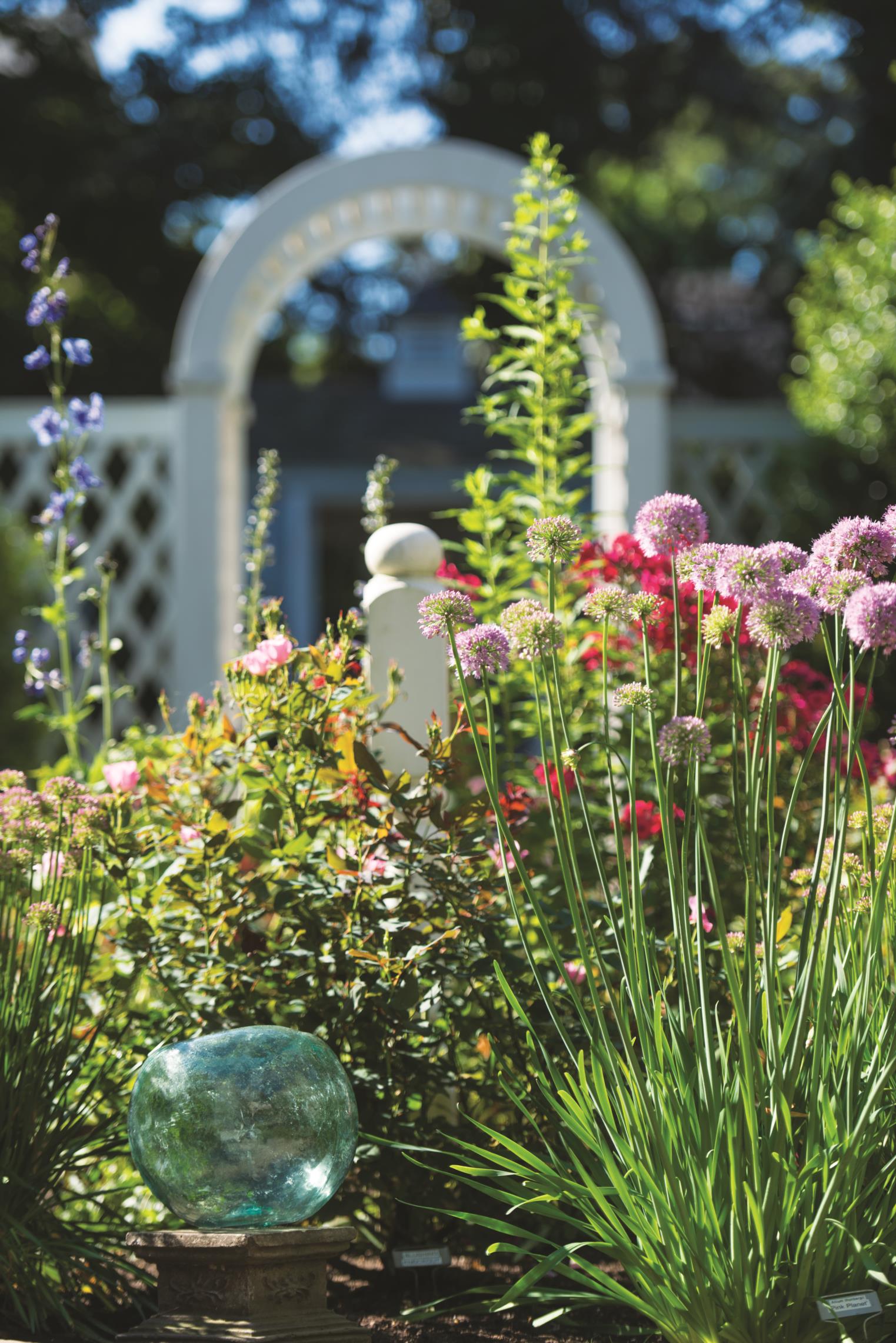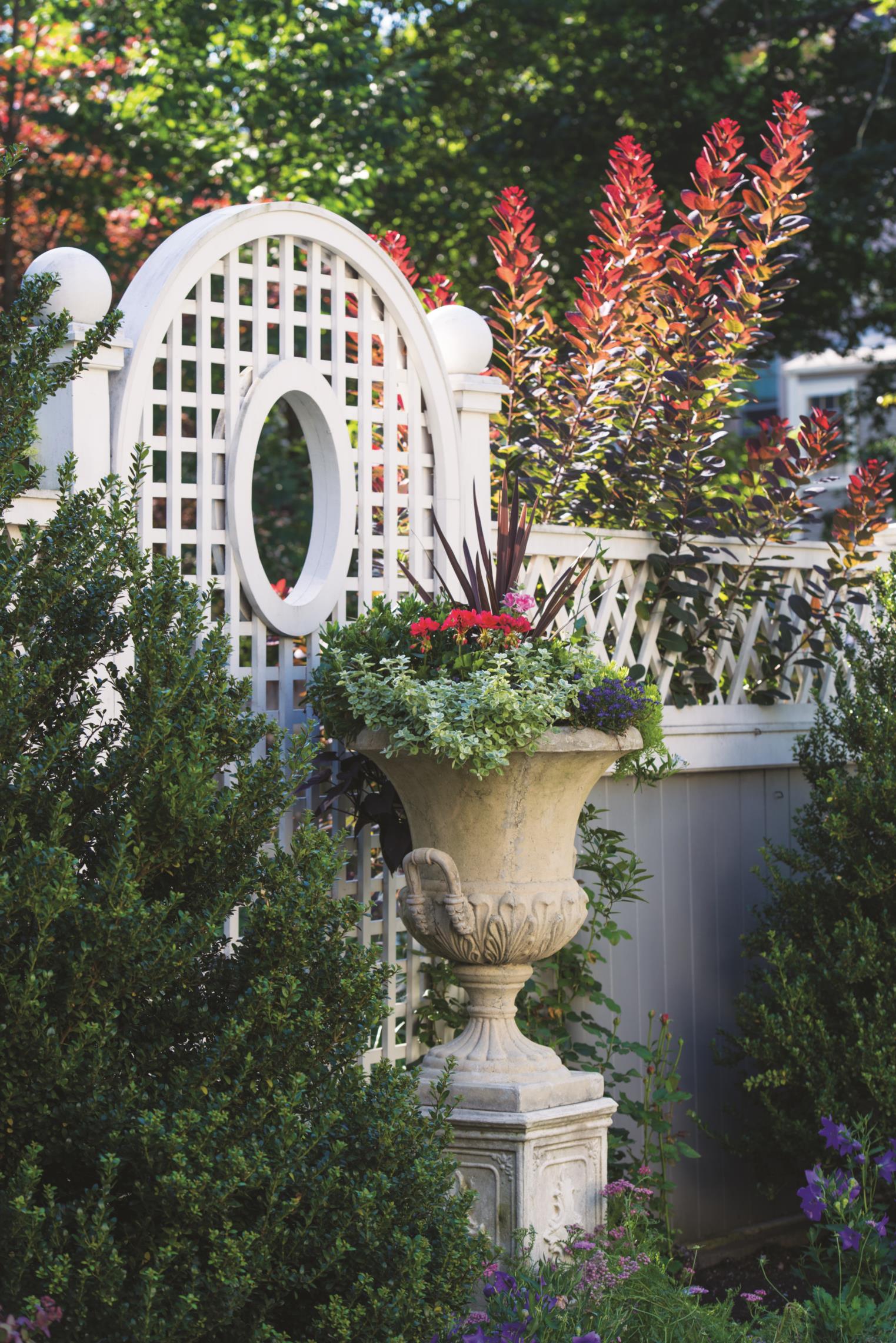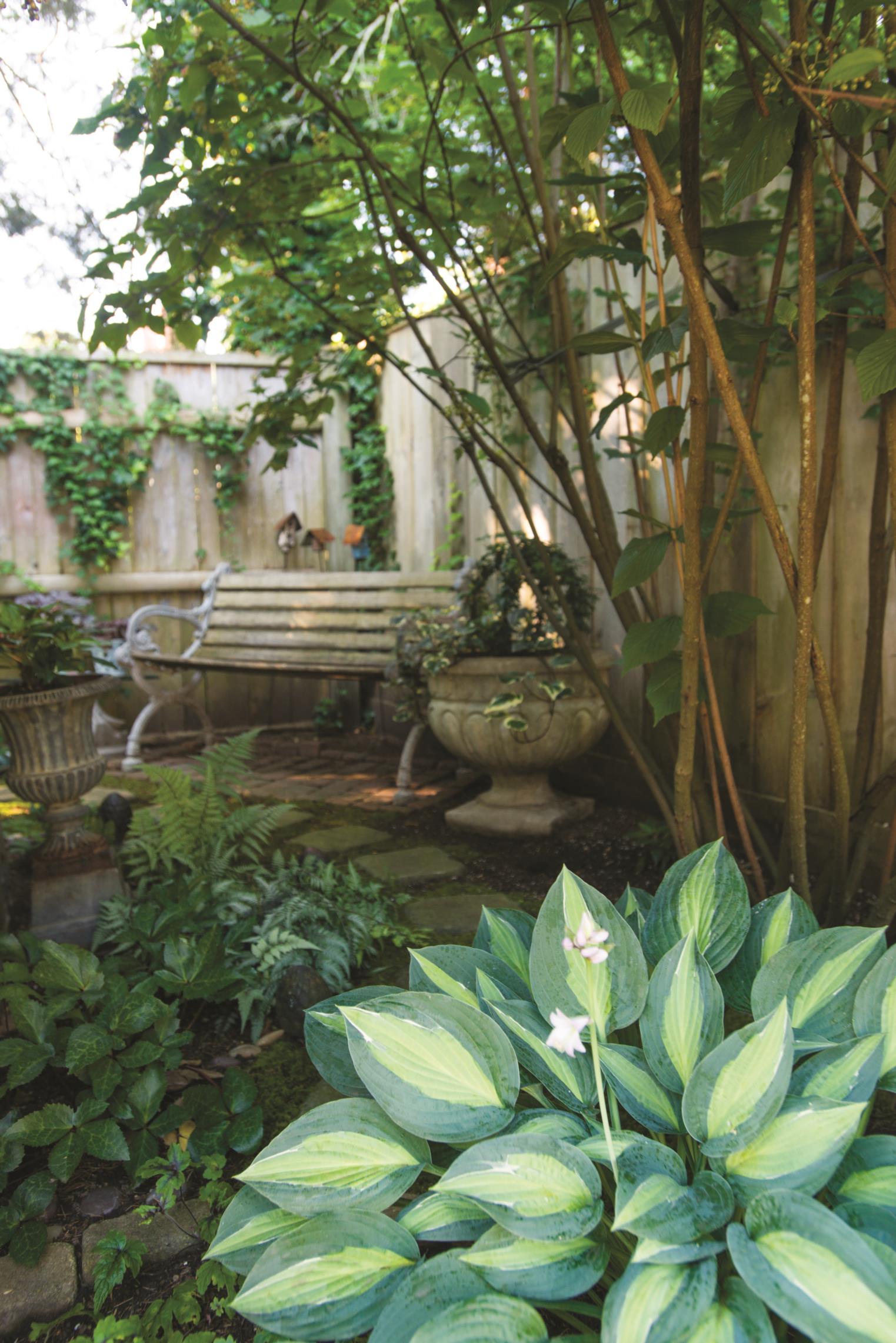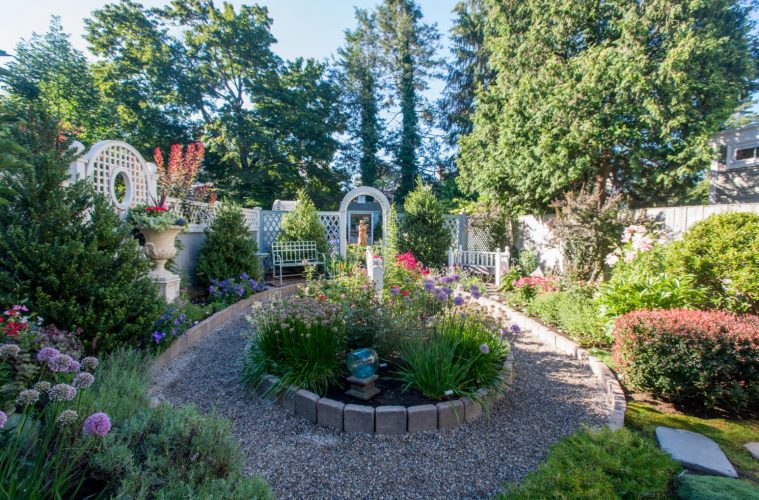Anyone who is embarking on a landscaping project for their historic house needs to talk with Linda and Fred Lipton. Having tackled some tricky makeover maneuvers in their own backyard, the Liptons will gladly steer you clear of many perilous garden design mistakes. Got a long slender strip of land in a historic district? These two can tell you exactly how to create garden “rooms” that offer the illusion of more space. Do you share a lot with a neighbor? The Liptons merged their plan so it segments space but allows a dialogue between areas. Stymied by an odd configuration that refuses symmetry? Balancing acts are the Liptons’ specialty. While they were installing their garden from scratch, these two experienced every head-scratching conundrum imaginable and came out victors. Their biggest budget-conscious bit of wisdom? “Decide on a color palette up front,” suggests Linda Lipton. “You’ll save time and money.”
Planning is what the Liptons are all about. When this seriously DIY duo came to Salem, they knew for sure that a garden was in the cards for the property where Elijah and Jacob Sanderson’s cabinet shop once stood. Arrested with Paul Revere on the night of April 18, 1775, not only was Elijah Sanderson among this country’s most courageous patriots, but he became a famed cabinetmaker in residence in Salem (a port town with a penchant for cabinetry) from 1780 to 1810. Not surprisingly, the history behind the address raised the bar to a daunting level, but the Liptons were equal to the task. Ask these two their goal for the garden and they sum it up in a single concept: “To honor the Sanderson brothers’ spirit.” Fred Lipton is fast to add, “And that made creating the garden way more fun.”
Absolutely, they had a ball, especially when the “archeological dig” portion of the project revealed all manner of fun artifacts. But they needed a serious strategy. By the time the Liptons obtained the long, slender 70- by 30-foot sliver of real estate in Salem in 2008, the cabinetmakers’ shop was long gone and had been replaced by a handsome 1846 Greek Revival home on the site. The house needed only the usual renovations to get it up to speed, but the yard was a different story entirely. Nothing remained but some brave hostas. Meanwhile, poison ivy and weed trees had invaded the backyard. Fortunately, the Liptons were equal to the task. Both Linda and Fred are staunch gardeners and good friends with Roger Swain, the legendary host of the PBS television series The Victory Garden. Whether a garden would take up residence at the location was never in question. However, figuring out how to incorporate a fully functional outdoor area was a challenge.
To come up with their solution, Linda studied everything she could find about tackling a small garden. The concept of creating “rooms” to give the sense of many different experiences was particularly compelling. “Rooms add chapters to the experience,” Linda likes to say. But continuity is also key. “You need to create a feeling of destination,” explains Fred. Although the garden is partitioned into several distict areas, sight lines between spaces prevent it from feeling claustrophobic and entice movement forward. Focal points such as arbors, statuary, and the garden shed lure you into the next space while also providing intrigue. A formal design seemed most apt, and touchstone shrubs were the first plants installed after the Liptons and their daughters finished laying all the brickwork by hand. “The shrubs are the anchors,” says Linda of the lilacs, pieris, viburnums, and other woody plants. Boxwood, columnar Japanese holly (Ilex crenata ‘Steeds’), and similar hedges reinforce the formality while adding texture. From that starting point, they began adding perennials.
Needless to say, the perennial selection was not haphazard. The Liptons still have their original plan, with circles and rectangles representing carefully selected named perennials stuck with push pins (making reshuffling a cinch) onto a board showing the overall garden layout. Some plants came from their previous Newton Highlands garden. But even when the Liptons went on purchasing junkets, they kept faithfully to the red/blue/purple/butter yellow/white palette they selected at the beginning. Beyond that main color scheme, lime green is occasionally permitted, as well as an occasional plant with rusty bronze foliage.
One major problem the Liptons encountered was the footprint, which didn’t allow for perfect symmetry. The solution was an oval central bed, which sends your eye moving through the length of the garden rather than focusing on its asymmetric width. But the trickiest maneuver by far was the solution for the necessary off-street parking in winter. For summer, when they want the space for outdoor socializing, the Liptons installed a removable fence for privacy and added a 10- by 10-foot perfectly ornamental garden tent. In winter, when they need the space for off-street parking, the fence is slipped out of its in-ground footings, the tent is dismantled, and the space is transformed into a driveway.
Basically, this garden is all about solutions. Methodical and inventive, the Liptons came up with solutions to every challenge they encountered along the way. “The process was as much fun as the finished product,” they both agree. Would the Sanderson brothers approve? No question.

